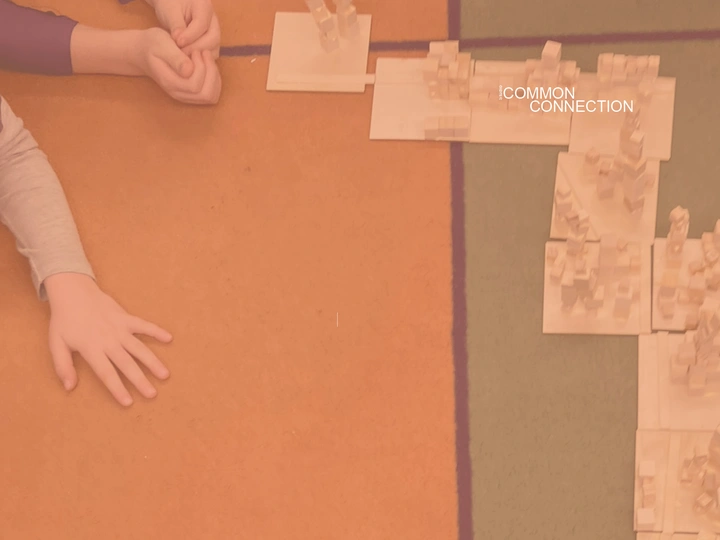Planning as a Practice of Care

I’m Maria Crammond, an architect and urban planner based in Copenhagen. I founded Studio Common Connection in 2025 to explore new ways of planning that are rooted in care, empathy, and community agency.
Before starting my own practice, I worked for 10 years at Tegnestuen Vandkunsten, where I led a range of strategic urban development projects across Denmark and Europe. My work spans scales—from masterplans to everyday spaces—but always aims to connect the physical and the social, the planned and the lived.
I focus on what I call empathetic planning: an inclusive, iterative, and place-based method that begins with listening and builds through trust, co-creation, and collective imagination. I see planning as a rehearsal of the future—a process that invites people to shape the spaces they inhabit, together.
I hold a diploma in architecture from the Royal Danish Academy and have studied anthropology, sociology, and participatory design. In 2025, I received a working grant from the Danish Arts Foundation and was selected for the Dreyer Foundation’s START programme for emerging architecture practices.
Recent projects include:
– Krøgenes Peninsula (NO): A co-created development plan for a post-industrial waterfront, awarded 1st prize in Europan 17, and now developed further with local stakeholders through dialogue and shared tools.
– Munkebo Strategic Development Plan (DK): An ongoing project with Kerteminde Municipality, using an iterative and inclusive method to rethink a fjordside town in collaboration with residents, harbour actors, and local institutions.
I often work with interdisciplinary teams—landscape architects, historians, traffic experts and citizen engagement specialists—to form communities of practice that anchor transformation in local realities.
Through my work, I seek to make planning both functional and felt—an act of care that begins with people.
I see urban development not as a linear problem-solving process, but as a sensitive, situated practice—rooted in care. I believe planning must respond to the complexity of place, people, and ecology—not by simplifying, but by meeting it with respect, empathy, and curiosity.
I founded Studio Common Connection in 2025 out of frustration with how cities are increasingly shaped by checklists, certifications, and data-driven processes that leave little room for lived experience or local identity. I wanted to create an alternative approach—one that starts by listening, grows through dialogue, and insists on a slower, more relational way of making change.
One example is my ongoing work in Krøgenes, Norway, where I lead a co-creative planning process to transform a former industrial site into a mixed-use neighbourhood. Rather than arriving with predefined answers, I invited landowners, residents, youth and the municipality into a shared process of imagining the future. Through workshops, mapping and model building, we created not just a plan, but trust, ownership and alignment. Its strength lies in the relationships it cultivated.
This kind of grounded, collective work offers a strong alternative to top-down urbanism. I see planning as something we rehearse together—testing, adjusting, and shaping in dialogue. I am developing a framework for what I call empathetic planning: a set of methods and values for navigating change with care, integrity and imagination.
Through LINA, I hope to share and further develop this approach—while learning from others who are rethinking architecture and spatial practice in response to today’s social and environmental urgencies.